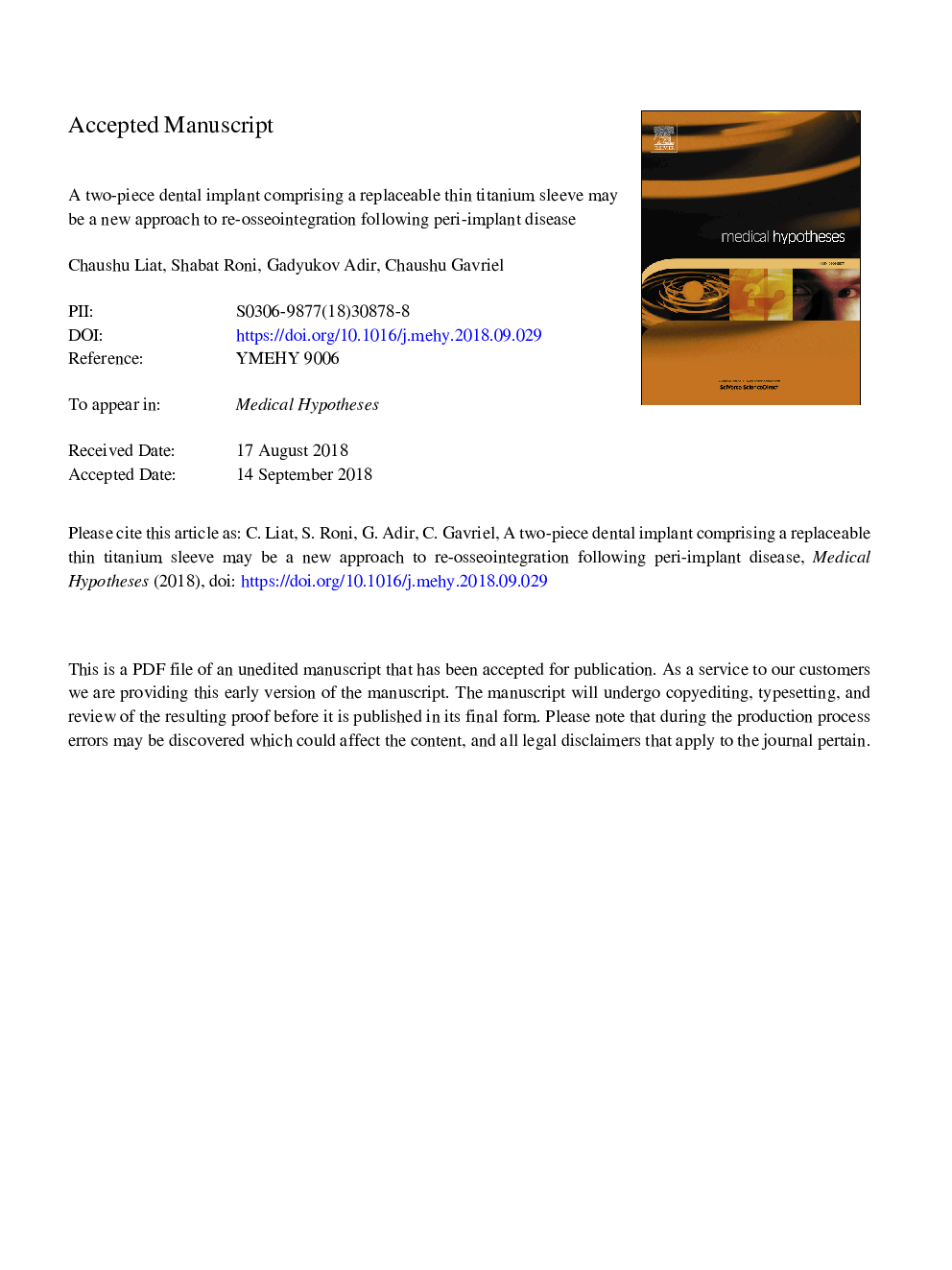| Article ID | Journal | Published Year | Pages | File Type |
|---|---|---|---|---|
| 11025779 | Medical Hypotheses | 2018 | 11 Pages |
Abstract
Bacteria initiated peri-implantitis can lead to bone destruction around a dental implant, modifying its surface and preventing re-osseointegration. Consequently, all available methods for treating periimplantitis have disappointing long-term results. Implant failure will lead to loss of the prosthetic reconstruction as well. A fresh new implant surface enables re-osseointegration. Our hypothesis is that a fresh new surface replacing a contaminated implant surface may be a new treatment approach for peri-implantitis and may allow re-osseointegration. A new two-piece dental implant, having a replaceable thin titanium sleeve may be designed. The replacement of a contaminated sleeve by a fresh new sleeve will solve the peri-implant disease by removing the contaminated surface, enabling re-osseointegration and ensuring long-term stability of the implant without endangering the prosthetic reconstruction. This minimally-invasive therapy is expected to be conducted in a simple manner, by every practicing dentist, during supportive periodontal treatment, thereby facilitating the treatment of peri-implantitis.
Related Topics
Life Sciences
Biochemistry, Genetics and Molecular Biology
Developmental Biology
Authors
Chaushu Liat, Shabat Roni, Gadyukov Adir, Chaushu Gavriel,
